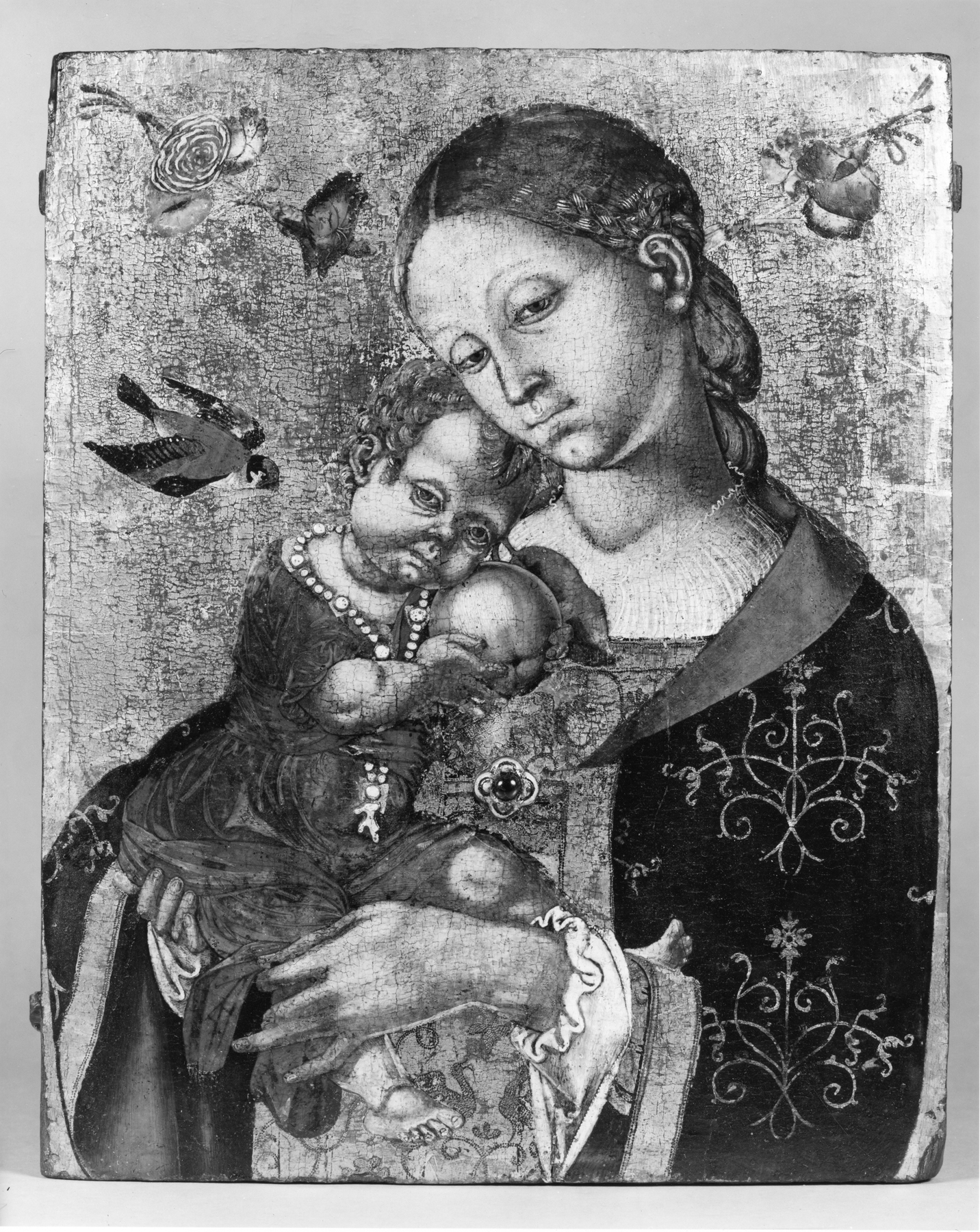Madonna and Child
(Renaissance Europe )
Although the Virgin is elegantly dressed, including a garnet (?) brooch, as befits the Queen of Heaven, she is shown here in a moment of maternal intimacy with her son. The composition is full of symbols. The Christ Child wears a rosary around his neck from which hangs a pendant sprig of coral (thought to ward off evil). The apple in Christ’s hands alludes to the “forbidden fruit” eaten by Adam and Eve (and therefore to their sin, which Christ will redeem with his death); the floral garland, which includes a carnation and a rose, symbolizes the Madonna’s love and purity, and the goldfinch flying toward the Christ Child is a foreshadowing of his death. According to popular legend, the bird plucked a thorn from Christ’s crown at the Crucifixion and became forever stained with his blood, hence the red spot on its beak.
Intimately-scaled and certainly intended for private devotion in a domestic interior, the painting is typical work by Bernardino di Mariotto, a prolific artist active primarily in his native region of Umbria in Central Italy in the early 1500s. By this date, gold backgrounds as well as the use of “pastiglia,” a technique of building up “gesso” (a plaster-like substance used as primer) on the painting’s surface to create three dimensionality, were largely out of fashion though they remained popular among patrons with more conservative tastes.
Provenance
Provenance (from the French provenir, 'to come from/forth') is the chronology of the ownership, custody, or location of a historical object. Learn more about provenance at the Walters.
Don Marcello Massarenti Collection, Rome [date and mode of acquisition unknown] [1881 catalogue: no. 33; 1897 catalogue: no. 84]; Henry Walters, Baltimore, 1902, by purchase; Walters Art Museum, 1931, by bequest.
Exhibitions
| 2006-2009 | Bedazzled: 5,000 Years of Jewelry from the Walters Art Museum. Frist Center for the Visual Arts, Nashville; The John and Mable Ringling Museum of Art, Sarasota; The Walters Art Museum, Baltimore. |
Conservation
| Date | Description | Narrative |
|---|---|---|
| Examination | examined for condition | |
| 1/26/1939 | Treatment | other |
| 1/26/1964 | Treatment | cleaned; examined for condition; inpainted; other; varnish removed or reduced |
| 9/1/2008 | Treatment | inpainted; varnish removed or reduced |
Geographies
Italy, Umbria (Place of Origin)
Measurements
Painted surface H: 13 15/16 x W: 11 1/8 x D: 3/4 in. (35.4 x 28.3 x 1.9 cm)
Credit Line
Acquired by Henry Walters with the Massarenti Collection, 1902
Location in Museum
Not on view
Accession Number
In libraries, galleries, museums, and archives, an accession number is a unique identifier assigned to each object in the collection.
In libraries, galleries, museums, and archives, an accession number is a unique identifier assigned to each object in the collection.
37.641


